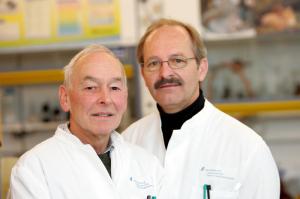
A working group at Rutgers University in New Jersey has now joined up with HZI researchers and discovered in detail how these compounds interact with the target in pathogenic bacteria. The novel target is different from the target of known antibiotics such as rifamycin, a standard medication to counteract tuberculosis.
This discovery makes the Braunschweig natural products extremely interesting candidates for a development as antibiotics - especially in view of the fact that the substances also kill bacterial strains that are resistant to antibiotics. Today, the scientists publish their results in the distinguished journal Cell.





Comment: The nurses may be onto something. Notice the guilt-tripping of the last three paragraphs. Thinking for yourself and looking out for your health is selfish! Can't have the sheeple making their own decisions.